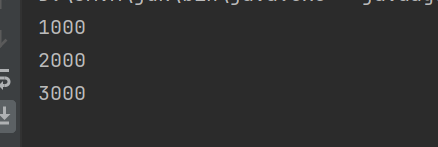JavaEE初级 多线程案例(单例模式、阻塞队列、线程池、定时器)
多线程案例
- 单例模式
- 饿汉式
- 懒汉式
- 阻塞队列
- 生产者消费者模型
- BlockingQueue
- 阻塞队列的实现
- 线程池
- ThreadPoolExecutor
- ExecutorService 和 Executors
- 定时器
单例模式
单例模式是保证一个类程序中,只存在唯一一个实例,不会创建多个实例
实现方式有多种,但是"饿汉"和"懒汉"这两种方式最常用
饿汉式
//饿汉式
class Singleton{//成为类的成员private static Singleton instance = new Singleton();//构造方法设置成私有private Singleton(){}//类的方法public static Singleton getInstance(){return instance;}
}
public class demo19 {public static void main(String[] args) {Singleton s1 = Singleton.getInstance();Singleton s2 = Singleton.getInstance();System.out.println(s1 == s2);}
}
此时两个获取的是相同对象
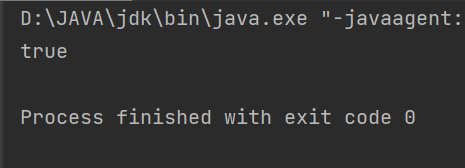
上面这个虽然是单线程下的代码,但是其在多线程下也是线程安全的,因为这里只只会new 一次对象,并且后面都是使用getInstance方法进行读取,并没有修改操作,所以这里在多线程下也是安全的
饿汉式要点
1.使用类静态变量表示对象
2.只通过一个静态方法获取对象
3.将其构造方法变成私有,防止new新对象
懒汉式
懒汉式是在获取对象的时候才进行初始化,并且这里也是只初始化一次
//单线程下懒汉式
class SingletonLazy{private static SingletonLazy instance = null;//将其构造方法私有private SingletonLazy(){}//获取方法public static SingletonLazy getInstance(){if(instance == null){instance = new SingletonLazy();}return instance;}
}
public class demo20 {public static void main(String[] args) {System.out.println(SingletonLazy.getInstance() == SingletonLazy.getInstance());}
}

但是这个和饿汉不同,这里会在这个getInstace方法中初始化,在多线程下可能会这样就可能会出现线程安全问题,所以其是线程不安全的
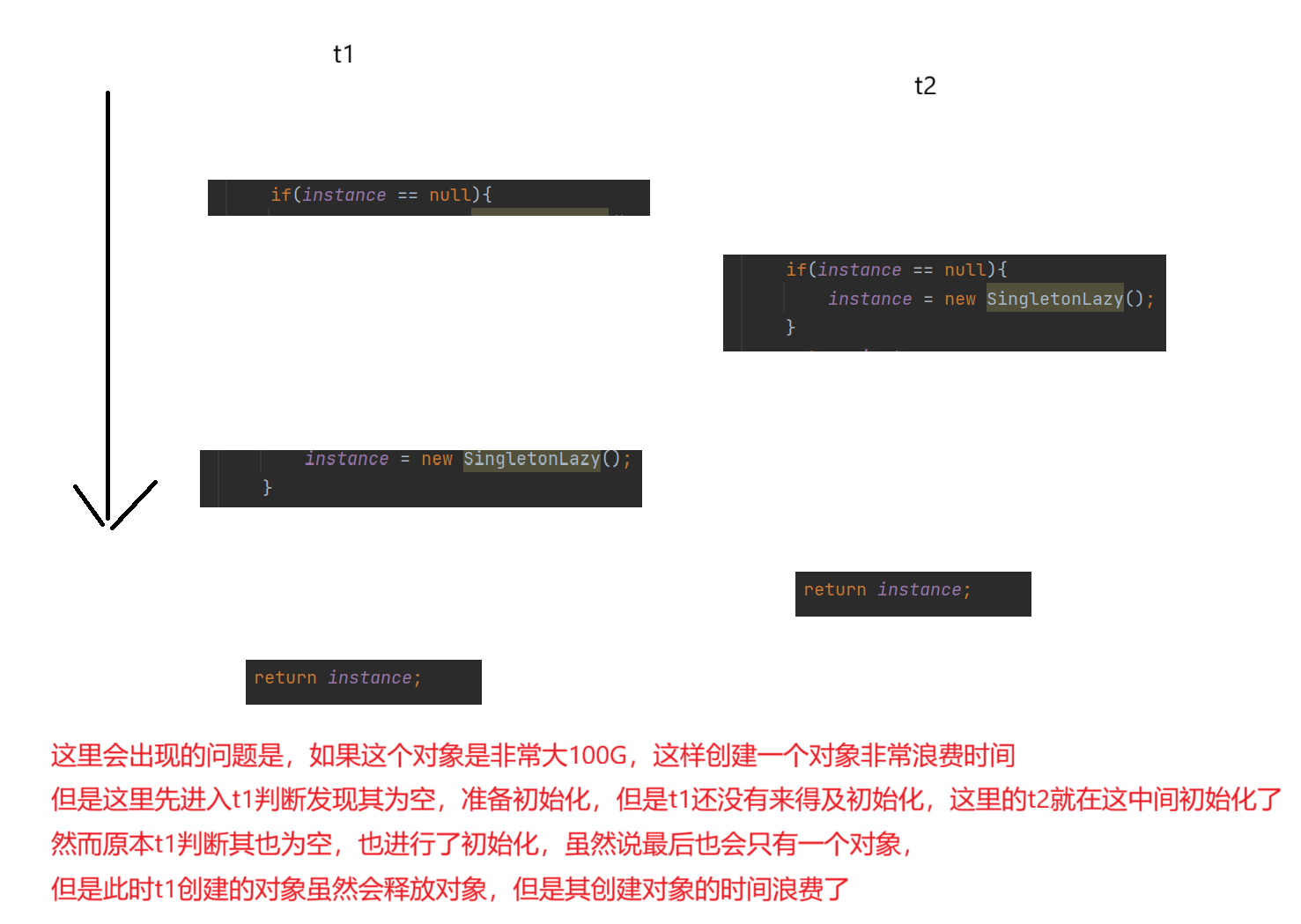
优化
此时可以对其加锁,将这个判断和初始化放一起
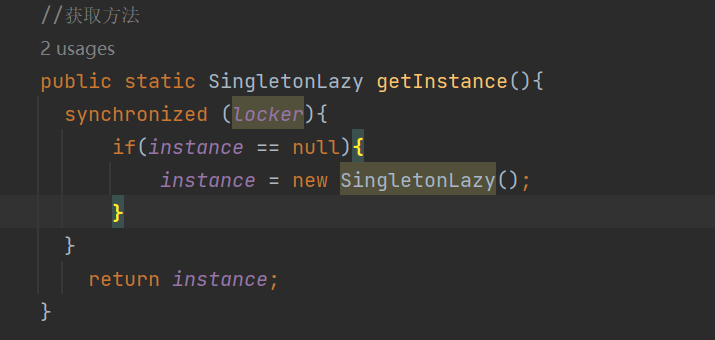
但是此时就会出现另一个问题,加锁是非常浪费时间的,但是这里只会初始化一次,但是这里每次获取对象都会进行加锁,
因此可以使用两个if分别表示不同含义,外层是判断是否需要加锁创建
内层是判断是否需要创建实例
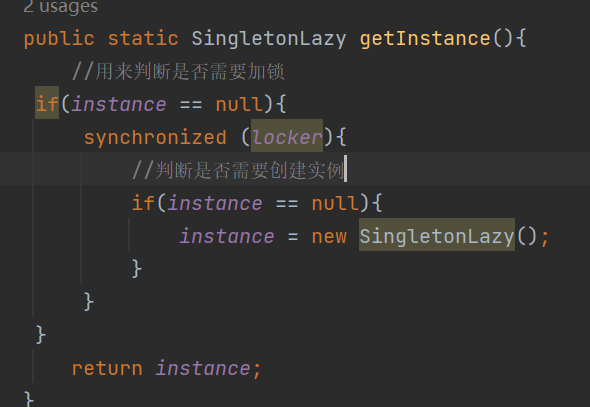
但是这样仍然有问题,指令重排序的问题,代码经过编译器优化可能会导致一些指令的执行顺序改变,这样会出现问题
instance = new SingletonLazy();这个简单的一行代码,对应大概三个指令1.分配内存2.针对空间内存进行初始化3.内存首地址赋值给变量这里如果将2和3顺序被编译器优化改变可能会出现指令重排序问题
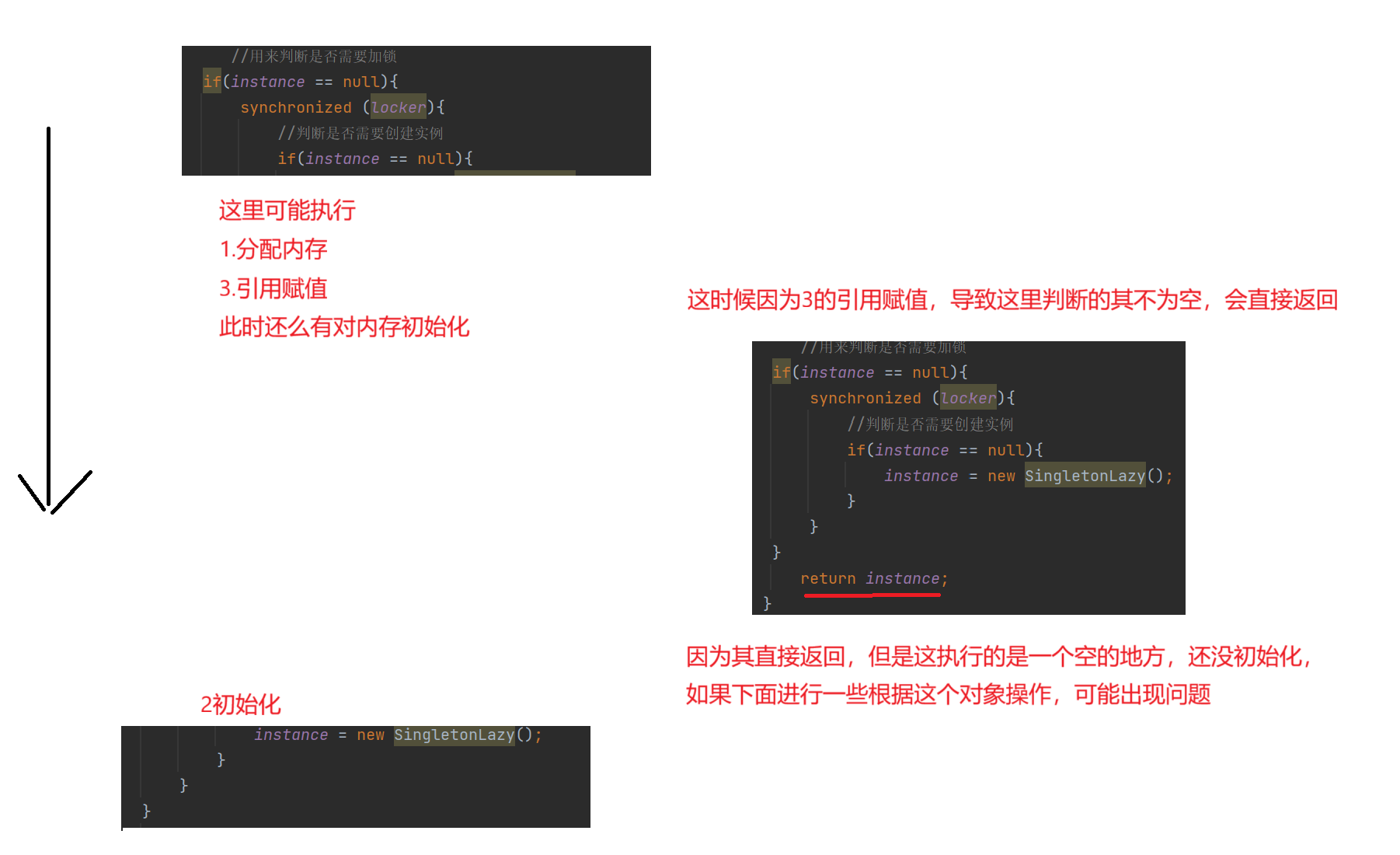
因此这里可以使用volatile来修饰那个变量即可
//多线程下懒汉式
class SingletonLazy{private volatile static SingletonLazy instance = null;private static Object locker = new Object();//将其构造方法私有private SingletonLazy(){}//获取方法public static SingletonLazy getInstance(){//用来判断是否需要加锁if(instance == null){synchronized (locker){//判断是否需要创建实例if(instance == null){instance = new SingletonLazy();}}}return instance;}
}
public class demo20 {public static void main(String[] args) {System.out.println(SingletonLazy.getInstance() == SingletonLazy.getInstance());}
}
懒汉式要点
1.初始化时候要进行加锁
2.要使用volatile 修饰instance ,防止指令重排序
3.内外两层if判断instance 是否为空,外层是判断是否需要加锁,内层是判断是否要初始化
阻塞队列
阻塞队列是一种特殊的队列,仍然满足先进先出,并且其是线性安全的,它特殊在1.队列满的时候,继续入队列,就会发生阻塞,只有其他线程取走元素,其才可以正常入队列
2.当队列为空的时候不可以出队列,除非其他线程插入元素
像"生产者消费者模型"就使用阻塞队列
生产者消费者模型
1.阻塞队列可以解耦合
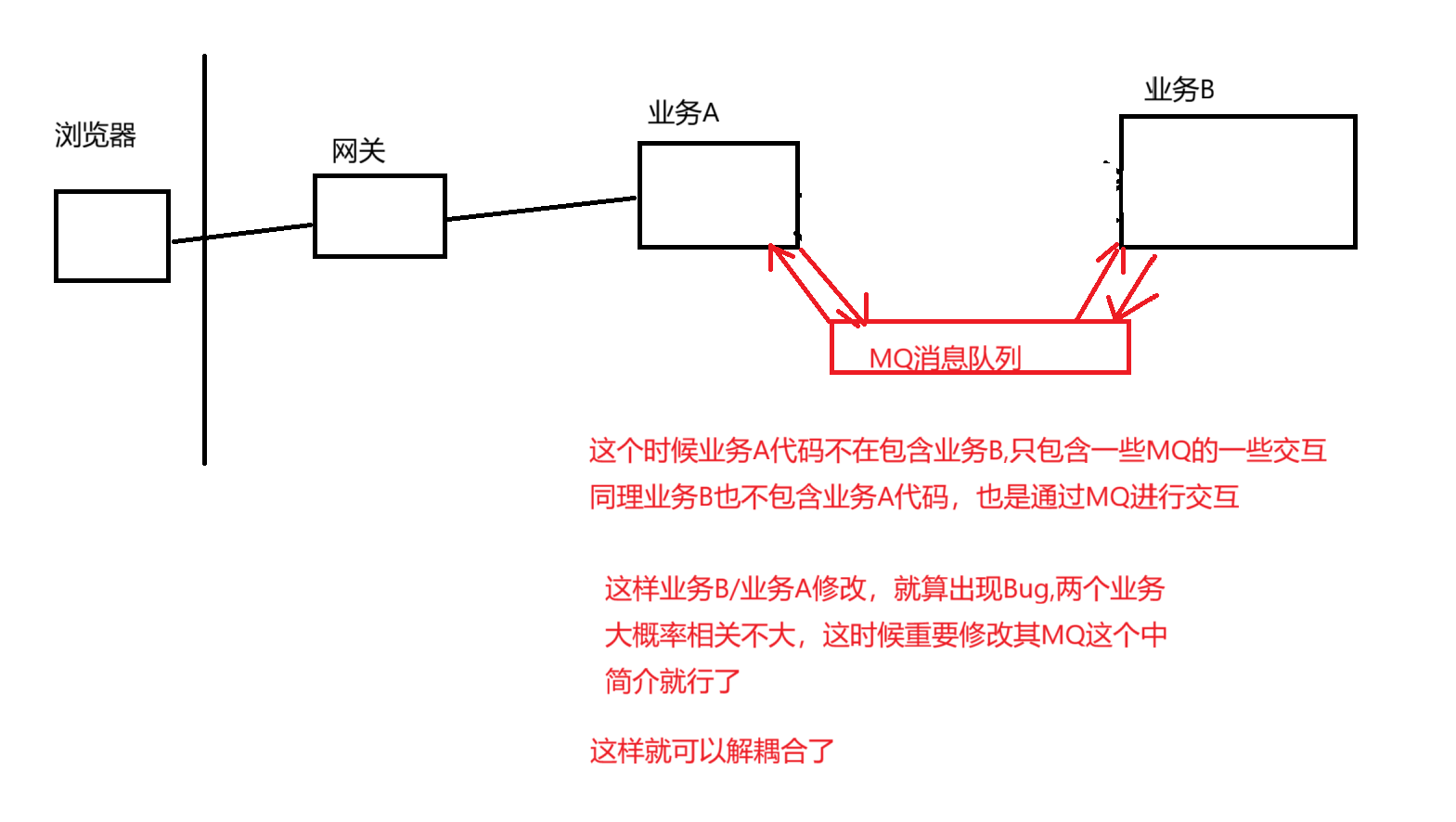
2.阻塞队列相当于一个缓冲区,平衡生产者和消费者的处理能力(削峰填谷)
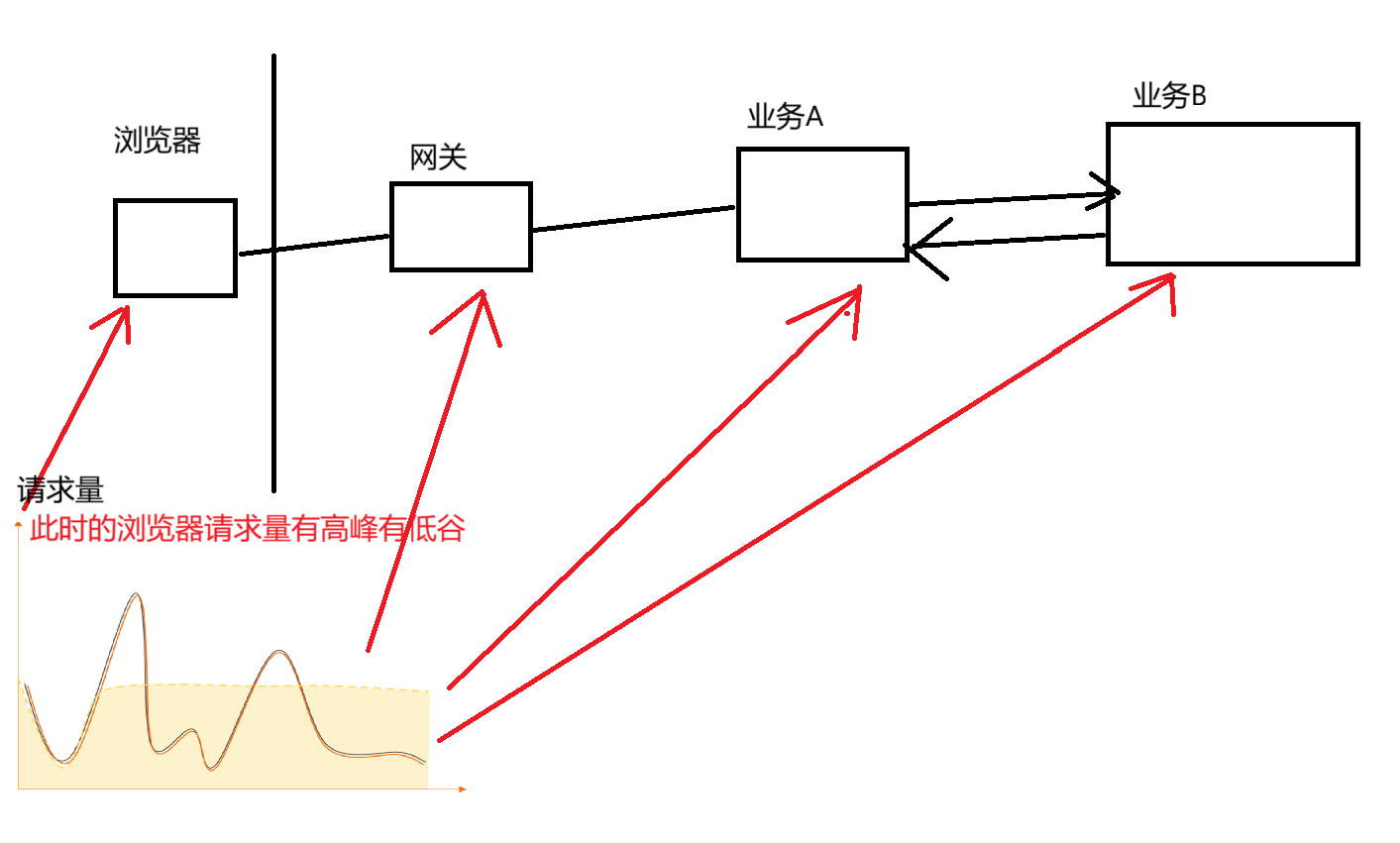
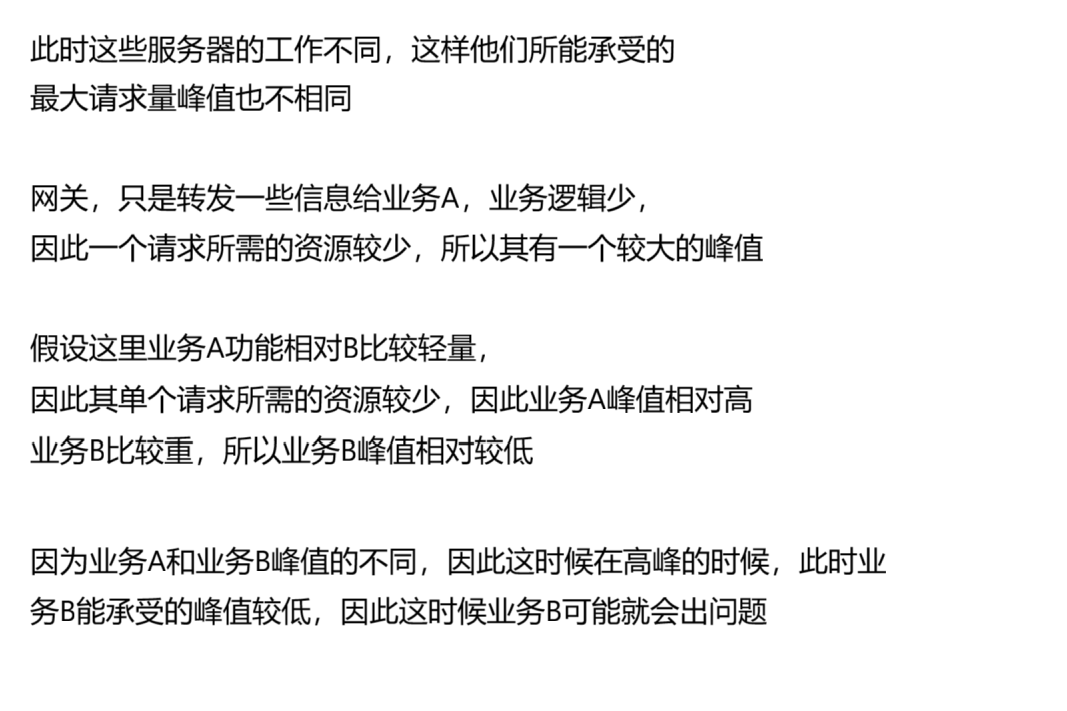
正因为服务器请求量使不断变化的,有高峰有低谷,但是这些业务有峰值高低不同,因此这可能会使一个业务崩溃
因此这里就可以使用阻塞队列作为"缓冲区"
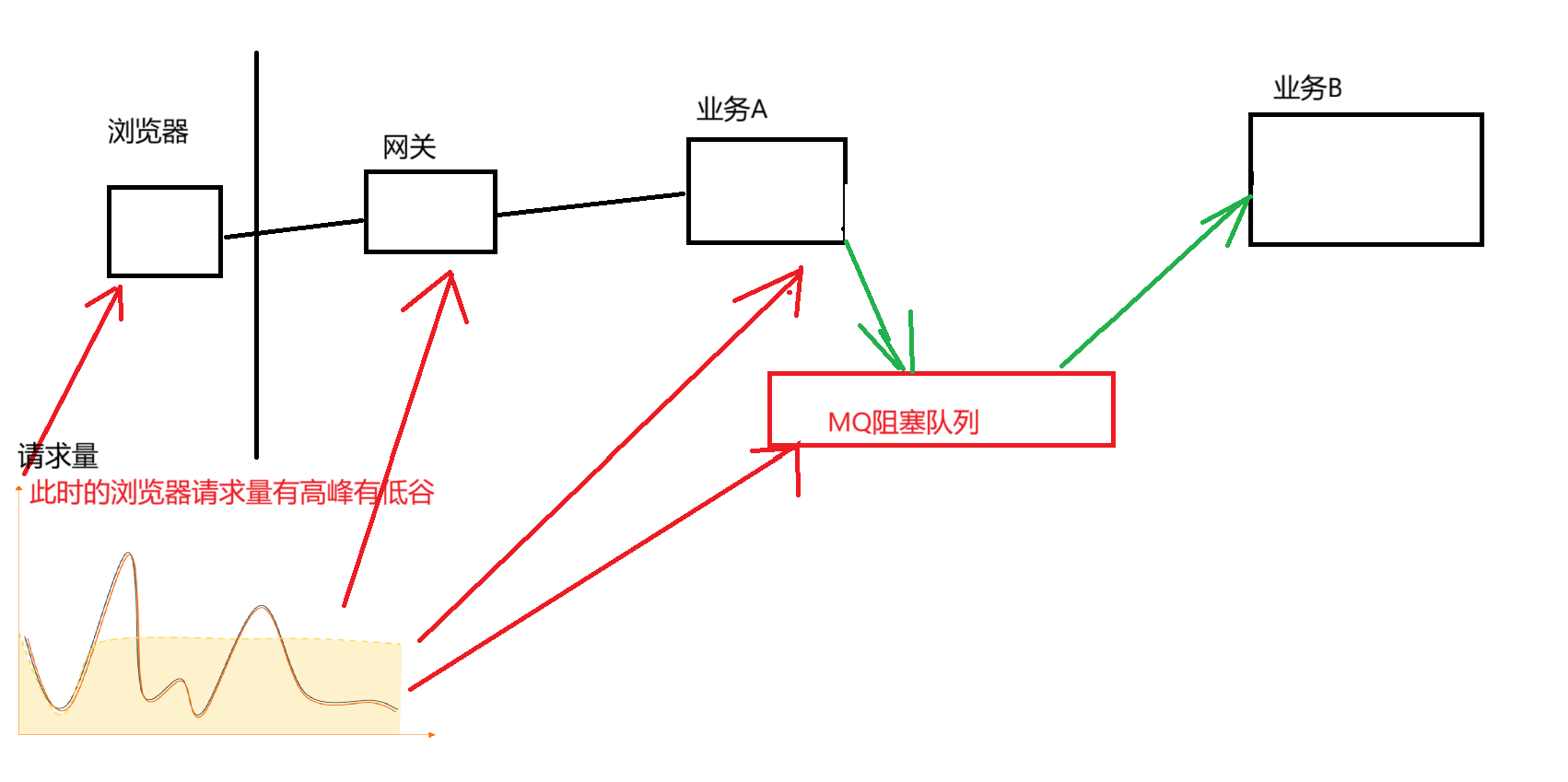
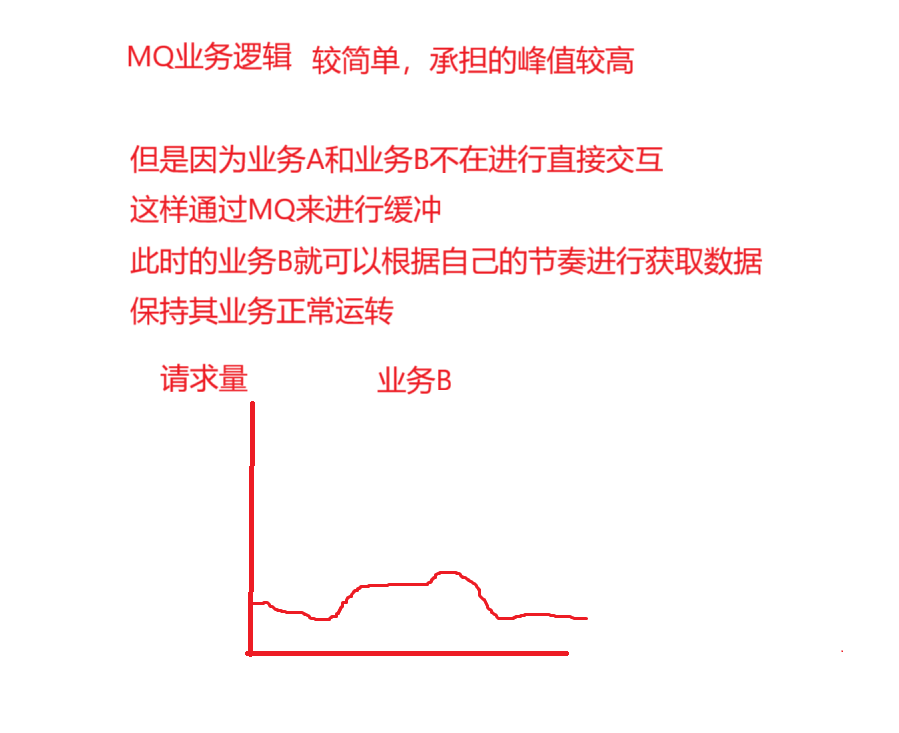
有了MQ阻断队列进行缓存,业务B可以根据自己节奏来获取数据,这样业务就可以正常运行,并且MQ阻塞队列能承受的峰值还是很大的
但是生产者消费者模型更适合"异步"操作
像这里和同步:A请求B,A会一直等到B的结果,拿到结果才会做其他事情
异步:A请求B ,A发完请求就不等了,B结果好了再通知A
BlockingQueue

BlockingQueue使一个接口继承Queue,其有可以根据数组、链表和堆(优先级队列)进行实例化对象
public class demo21 {public static void main(String[] args) throws InterruptedException {//基于链表BlockingQueue<Integer> blockingQueue = new LinkedBlockingQueue<>();//基于数组,必须给其初始化大小BlockingQueue<Integer> blockingQueue1 = new ArrayBlockingQueue<>(1);//基于堆(优先级队列)BlockingQueue<Integer> blockingQueue2 = new PriorityBlockingQueue<>();//入队列blockingQueue.put(1);//出队列System.out.println(blockingQueue.take());}
}

public class demo22 {public static void main(String[] args) {BlockingQueue<Long> queue = new ArrayBlockingQueue<>(100);Thread t1 = new Thread(() ->{long n = 0;while (true){try {queue.put(n);System.out.println("生产了:" + n);n++;} catch (InterruptedException e) {throw new RuntimeException(e);}}});Thread t2 = new Thread(() ->{try {queue.take();long m = 0;while (true){System.out.println("消费了:" + m);m++;}} catch (InterruptedException e) {throw new RuntimeException(e);}});t1.start();t2.start();}
}
此时虽然我们给的容量使100,但是这是不断在生产和消费的
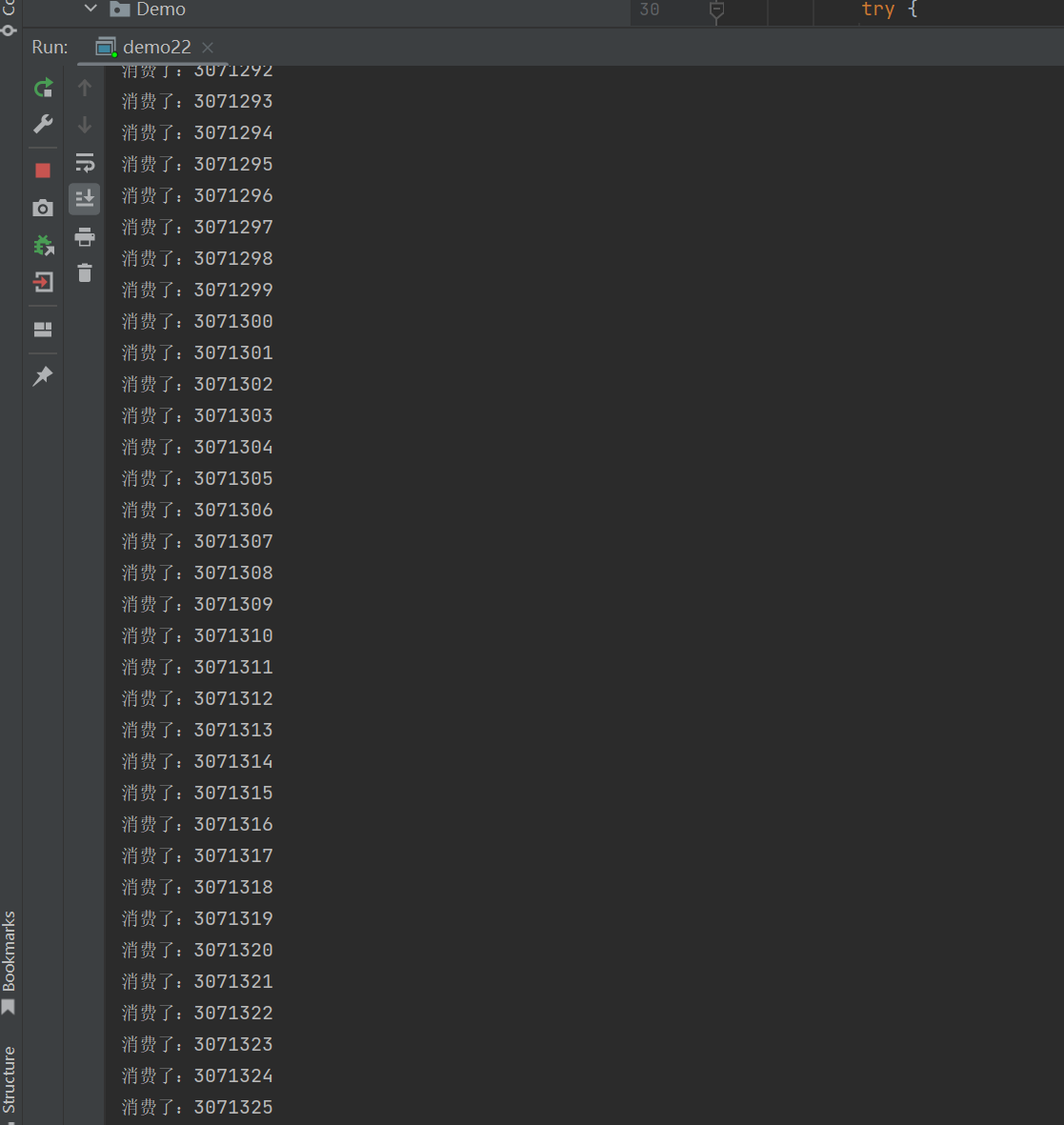
当然可以使用sleep让其线程慢一点
public class demo22 {public static void main(String[] args) {BlockingQueue<Long> queue = new ArrayBlockingQueue<>(100);Thread t1 = new Thread(() ->{long n = 0;while (true){try {queue.put(n);System.out.println("生产了:" + n);n++;Thread.sleep(1000);} catch (InterruptedException e) {throw new RuntimeException(e);}}});Thread t2 = new Thread(() ->{try {queue.take();long m = 0;while (true){System.out.println("消费了:" + m);m++;Thread.sleep(1000);}} catch (InterruptedException e) {throw new RuntimeException(e);}});t1.start();t2.start();}
}
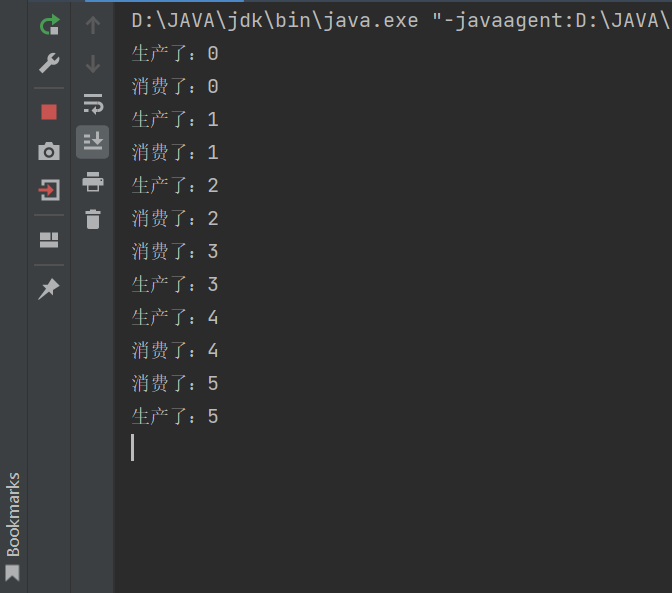
阻塞队列的实现
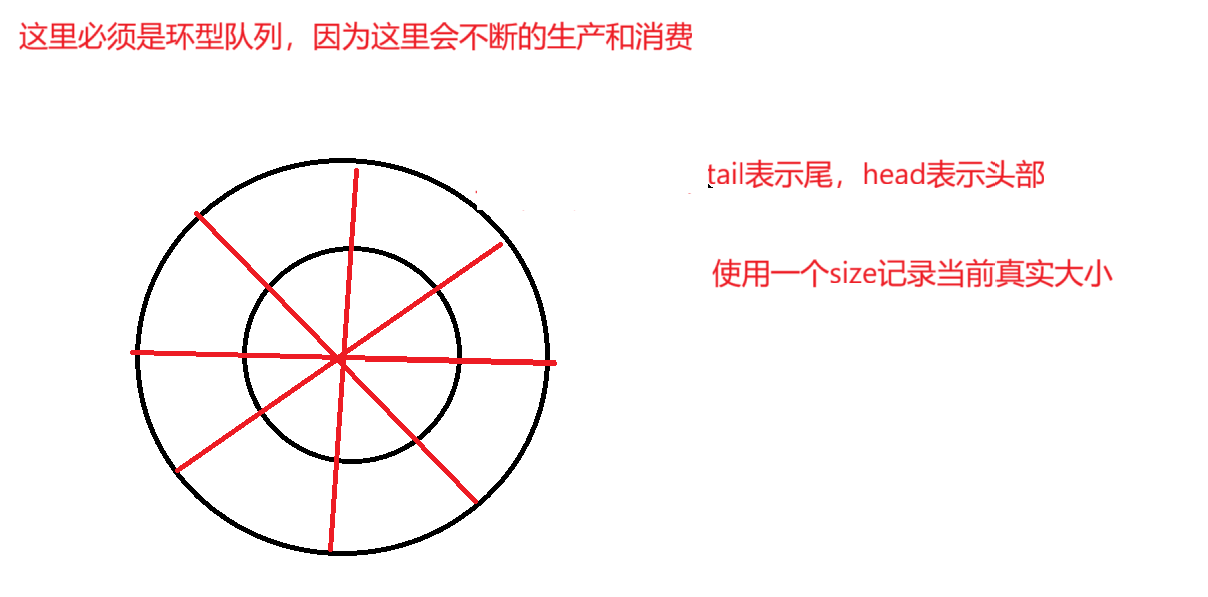
1.这里的size是用来判断其数组是否满
2.这里为了保证线程安全所以要使用到锁
3。因为这里空的时候不可以消费,满的时候不可以生产,这要进行判断并使用wait进行等待,并且使用while判断,因为这样当线程被notify唤醒以后,再一次确认一下条件,再进行执行
class MyBlockingQueue{private int[] data;private int tail;//尾private int head;//头int size;//数组真实长度,判断数组是否满private static Object locker = new Object();//构造函数public MyBlockingQueue(int capacity){if(capacity <= 0){return;}data = new int[capacity];}//put生产public void put(int e) throws InterruptedException {synchronized (locker){//判断其是否已经满了//使用while这样可以再进行一次判断,当重新获取锁的时候while (size == data.length){//此时就要等到,等到消费,才可以继续生产locker.wait();}data[tail] = e;tail++;//此时走到了末尾,就要回到起始位置if(tail >= data.length){tail = 0;}size++;locker.notify();}}public int take() throws InterruptedException {synchronized (locker){while (size == 0){locker.wait();}//取出head元素int ret = data[head];head++;if(head >= data.length){head = 0;}size--;locker.notify();return ret;}}
}
public class demo23 {public static void main(String[] args) {MyBlockingQueue queue = new MyBlockingQueue(100);Thread t1 = new Thread(() ->{int n = 0;while (true){try {queue.put(n);System.out.println("生产了:" + n);n++;Thread.sleep(1000);} catch (InterruptedException e) {throw new RuntimeException(e);}}});Thread t2 = new Thread(() ->{try {queue.take();long m = 0;while (true){System.out.println("消费了:" + m);m++;Thread.sleep(1000);}} catch (InterruptedException e) {throw new RuntimeException(e);}});t1.start();t2.start();}
}没使用sleep
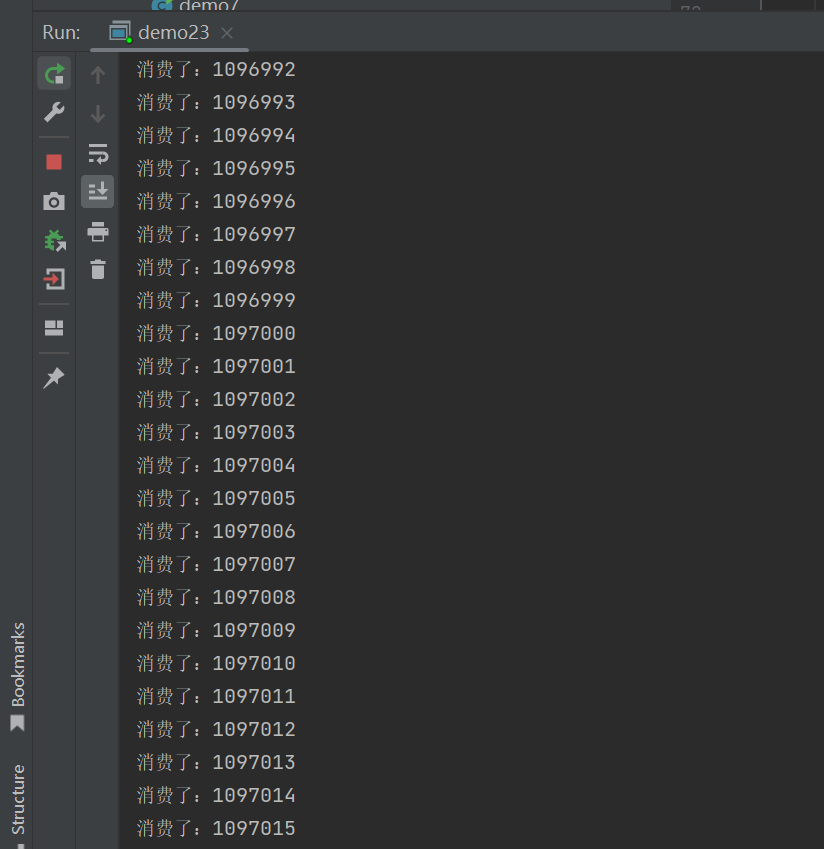
生产和消费都用sleep,让其慢一点
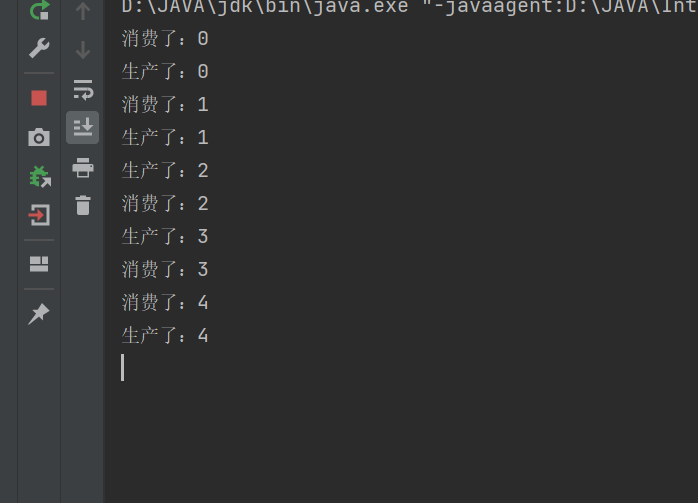
线程池
最开始并发编程使用多进程,但是发现大量的生产和销毁这样非常浪费时间,因此引入多线程(轻量级进程),但是如果业务过多,其线程的生产和销毁也是比较浪费时间的
可以使用线程池的方式来解决,把线程创建好,提前放到一个位置,需要的时候直接从里面取就行,这样比每次从操作系统中创建来的快
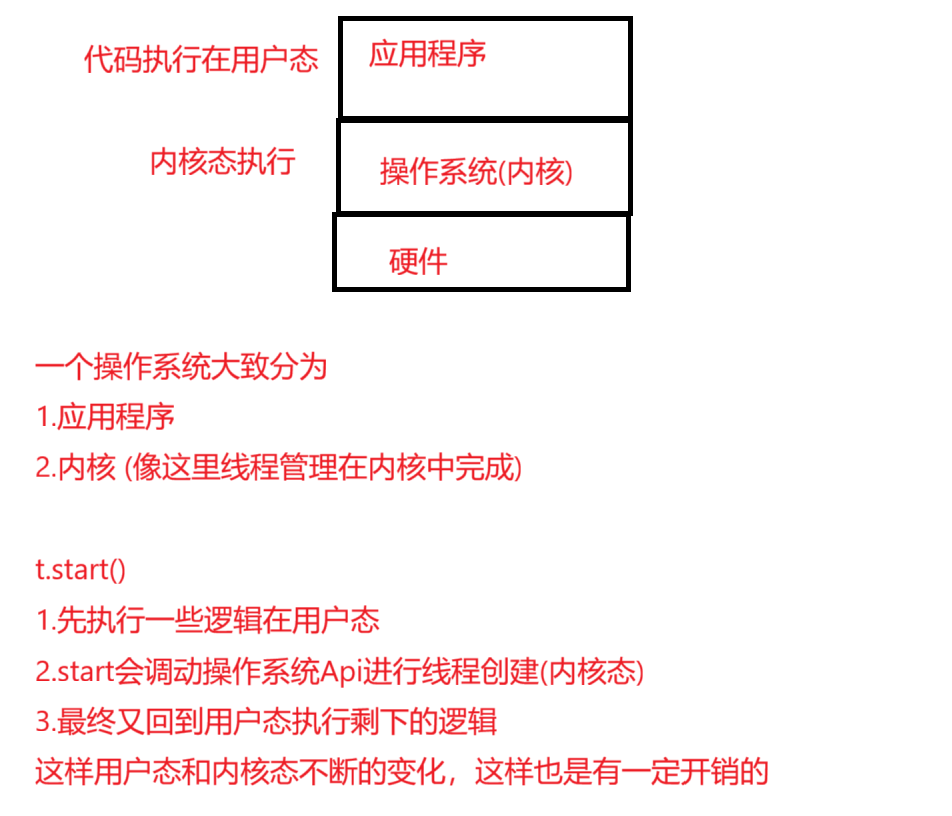
因此,这里线程池提前把调用系统api创建好,这样创建Thread对象在一个集合类中,后续如果使用可以直接从这里面取就行,这样就是纯用户态的代码了
ThreadPoolExecutor

这里我们重点看一下最后一个构造方法
ThreadPoolExecutor(int corePoolSize, int maximumPoolSize,
long keepAliveTime, TimeUnit unit,
BlockingQueue<Runnable> workQueue,
ThreadFactory threadFactory,
RejectedExecutionHandler handler)
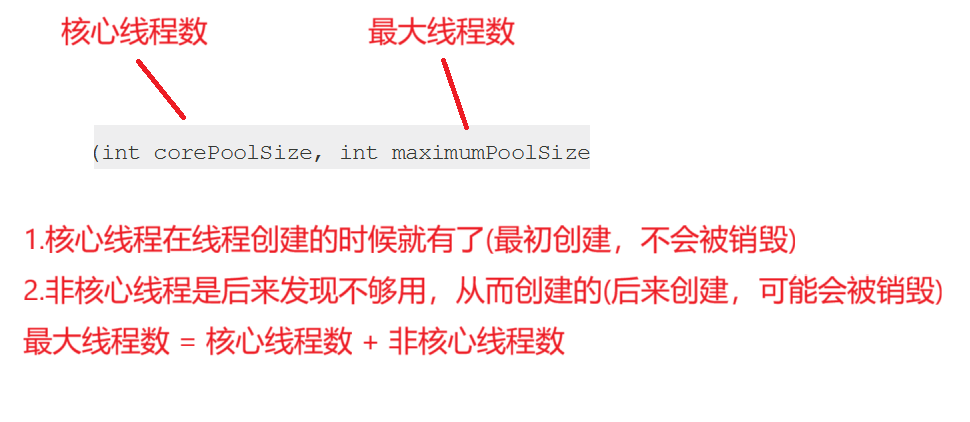


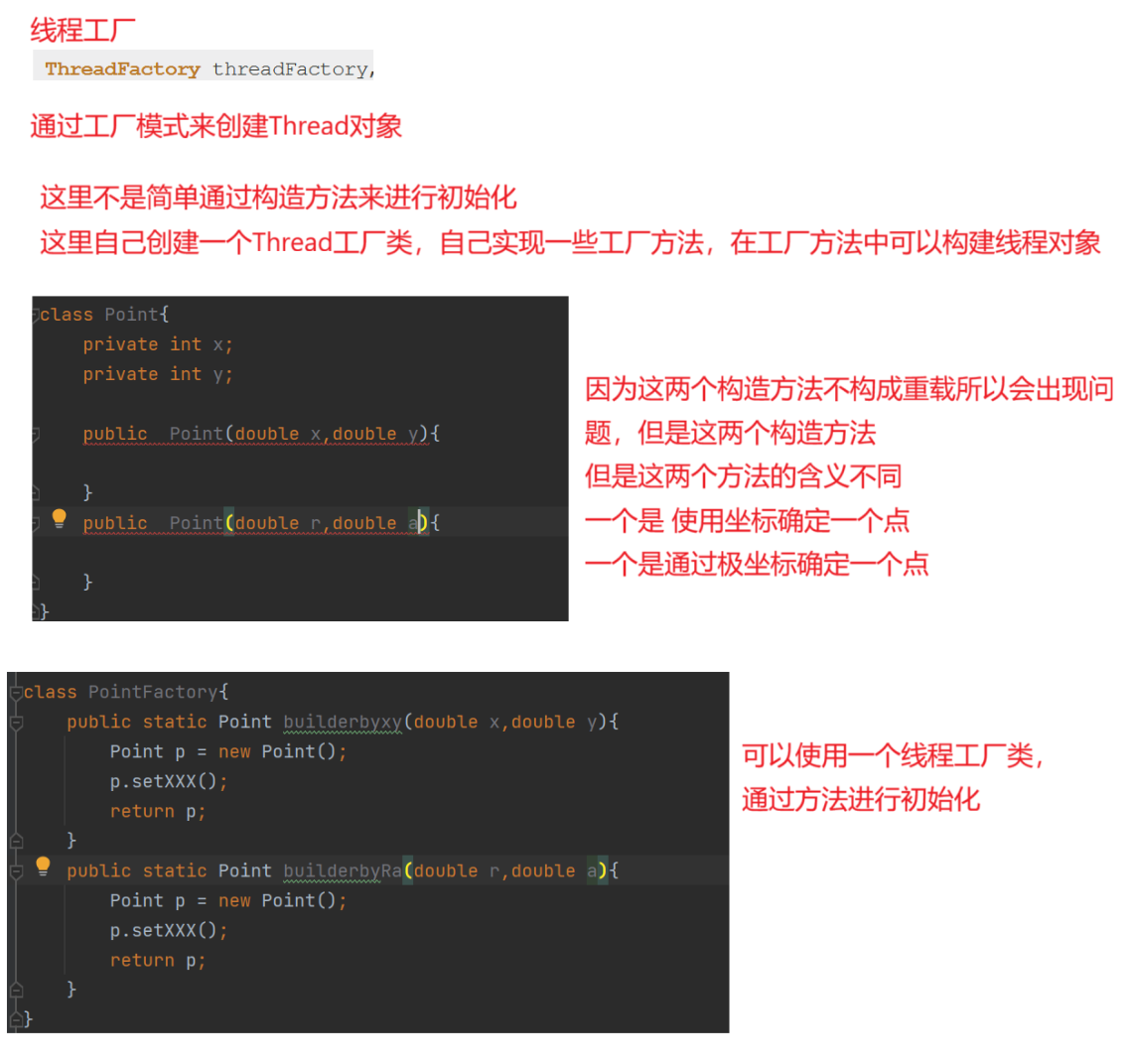
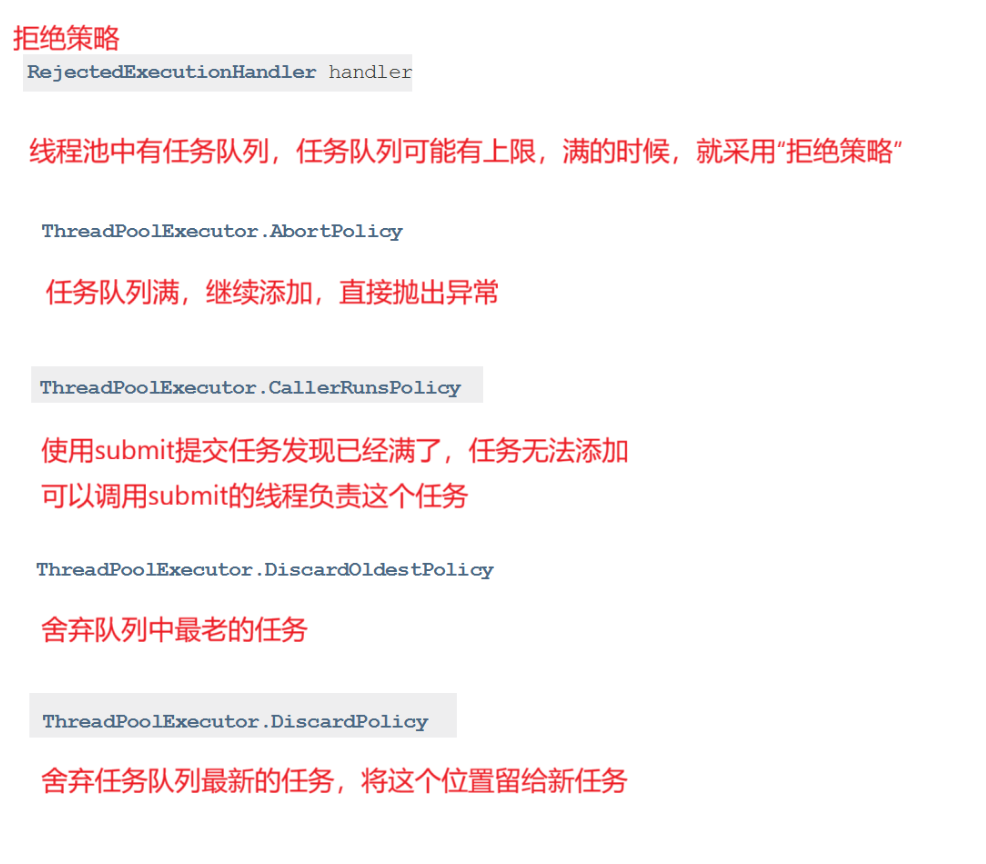
这个构造方法没有核心线程,都是非核心线程,不用指定上限,并且可以自动扩容

固定线程数量,不会自动扩容/缩容

线程不是立即执行,而是在某个时间执行(计时器)
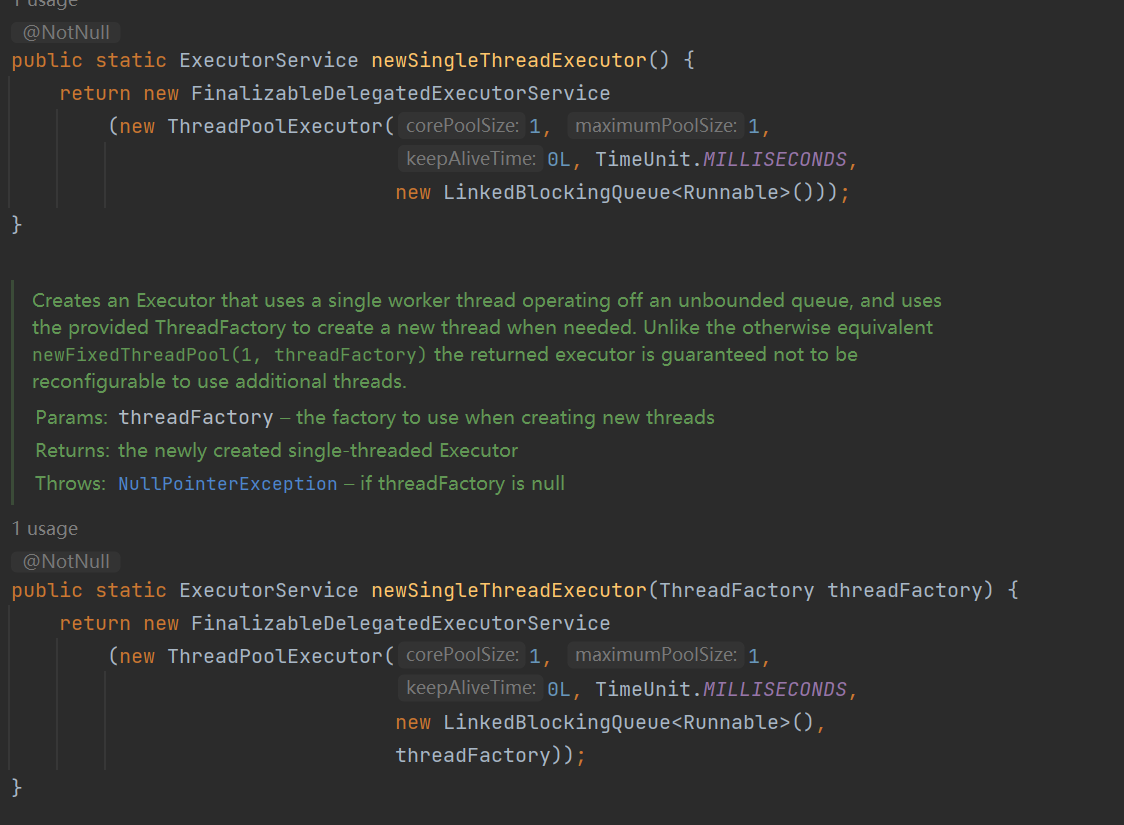
只有一个线程的定时器线程
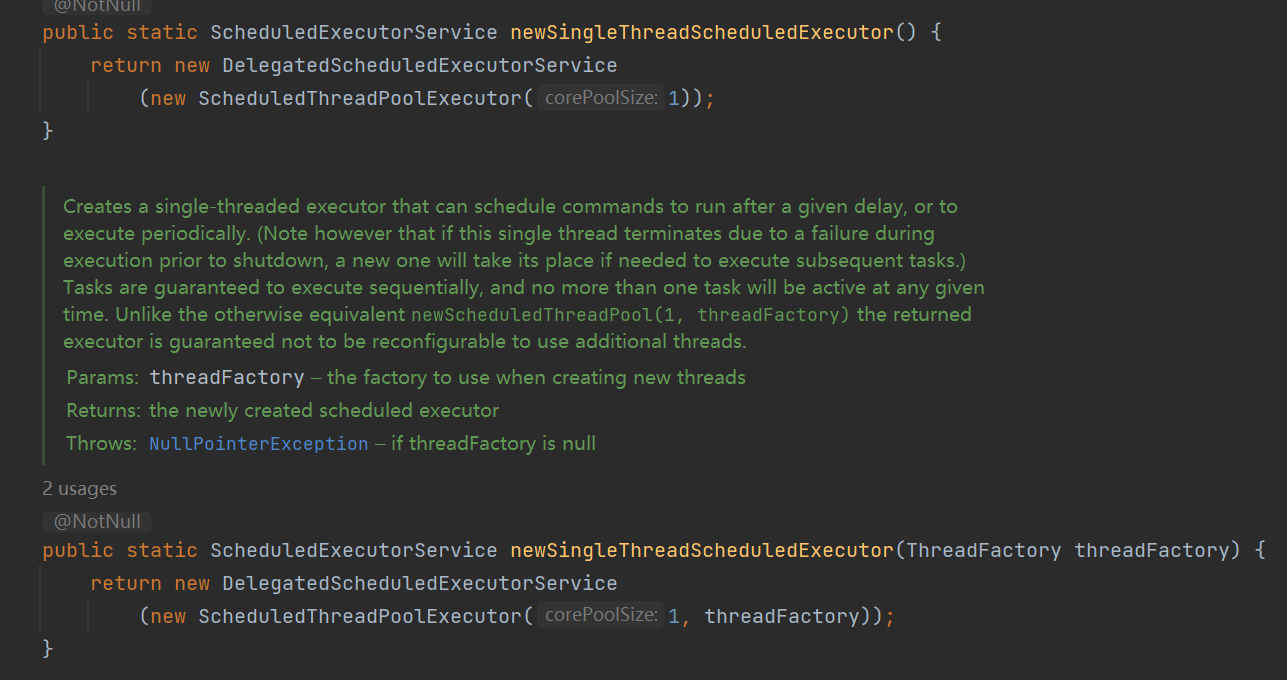
ExecutorService 和 Executors
public class demo25 {public static void main(String[] args) {ExecutorService executorService = Executors.newCachedThreadPool();for (int i = 0; i < 1000; i++) {final int id = i;executorService.submit(new Runnable() {@Overridepublic void run() {System.out.println(Thread.currentThread().getName() + "," + id);}});}}
}没有上限,并且当一个线程完成以后,其也可以继续参与调度
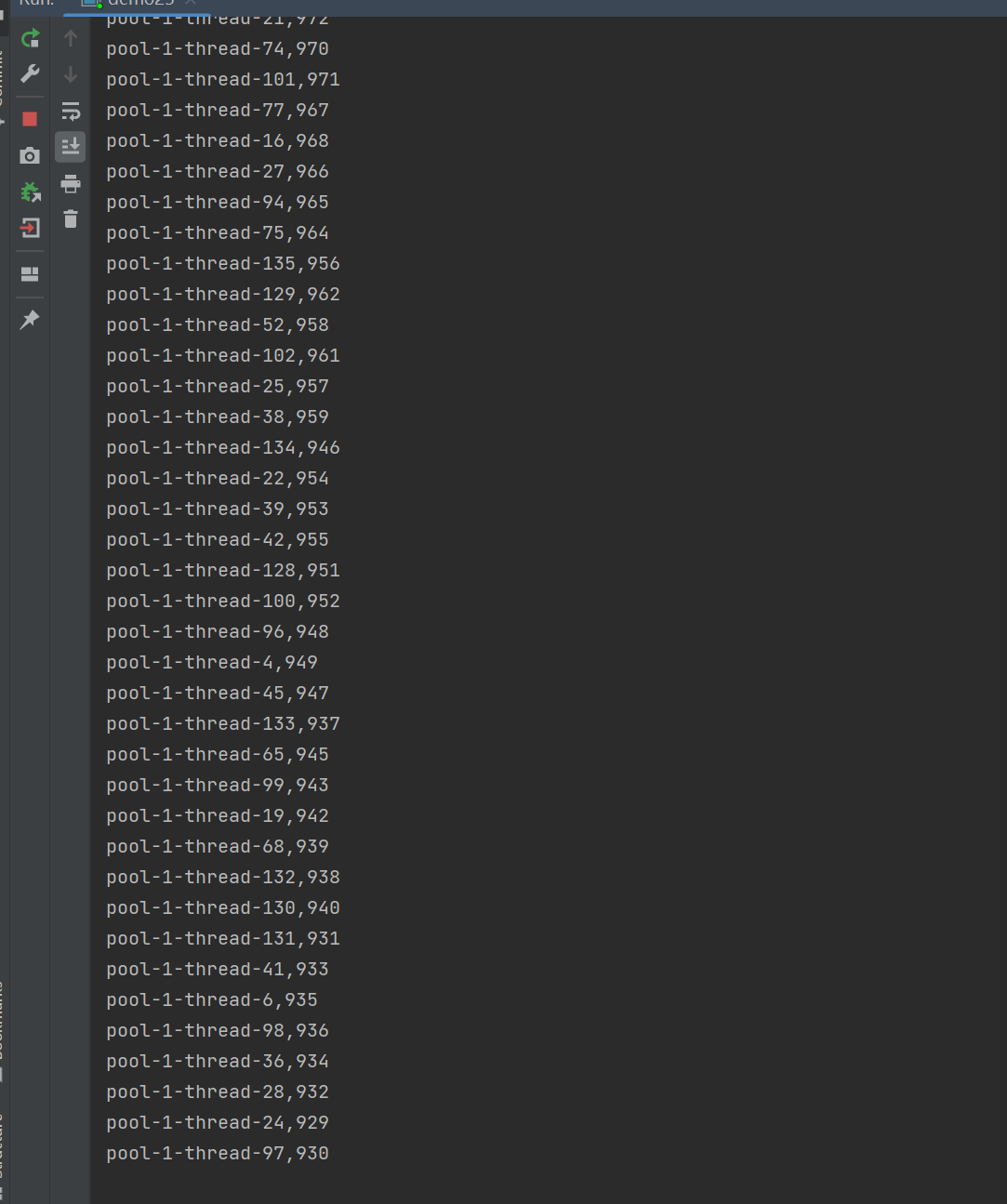
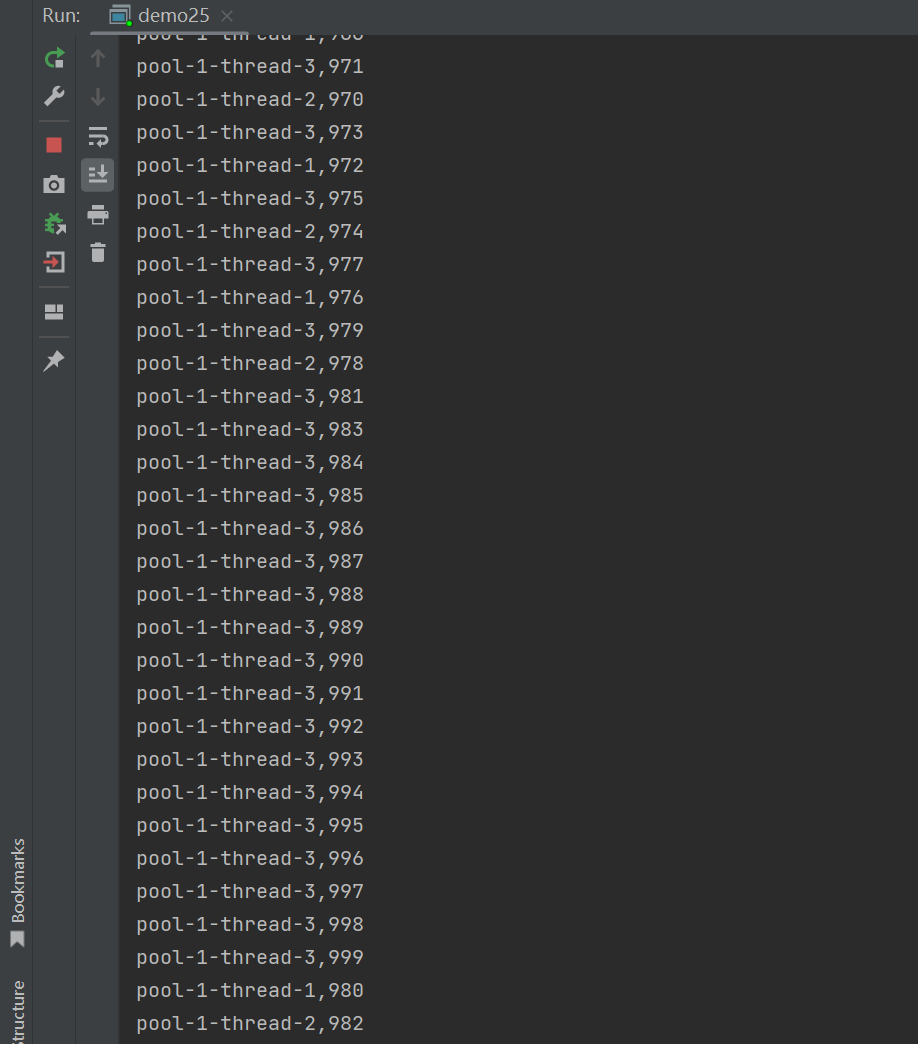
public class demo25 {public static void main(String[] args) {//ExecutorService executorService = Executors.newCachedThreadPool();ExecutorService executorService = Executors.newFixedThreadPool(3);for (int i = 0; i < 1000; i++) {final int id = i;executorService.submit(new Runnable() {@Overridepublic void run() {System.out.println(Thread.currentThread().getName() + "," + id);}});}}
}固定线程数量
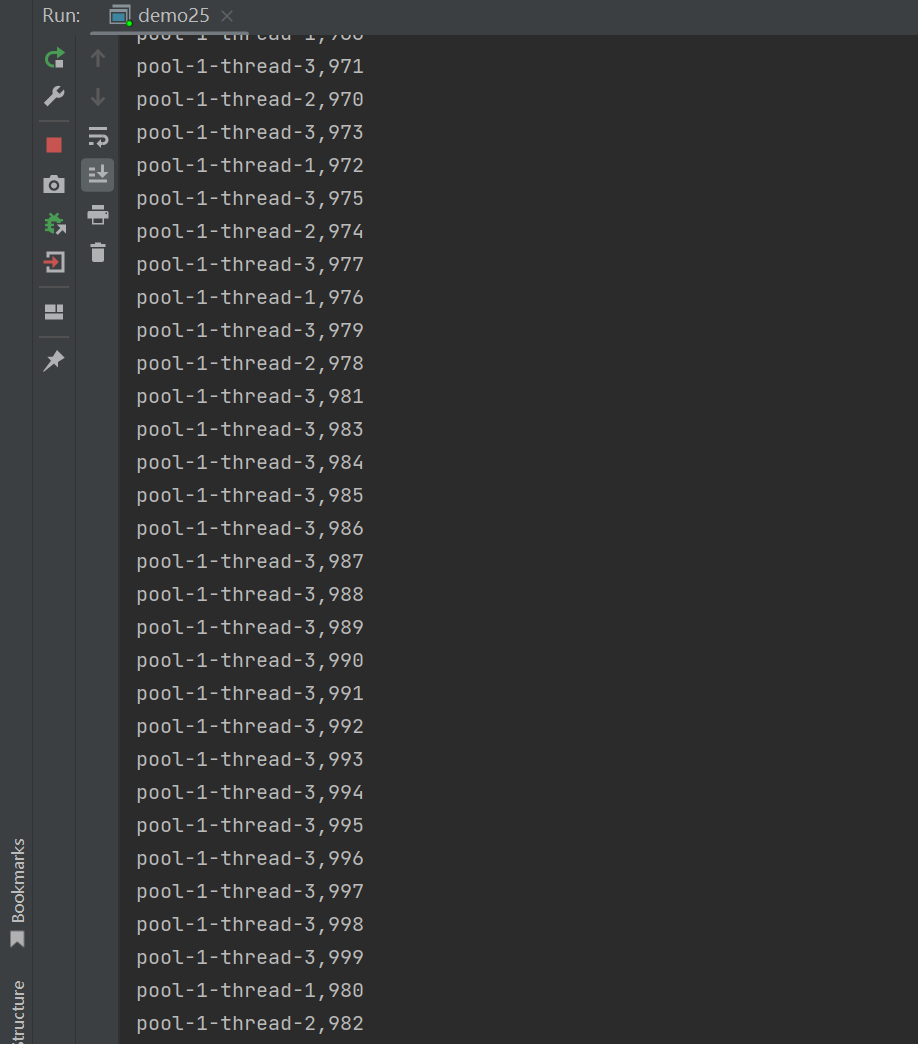
线程池的简单实现
1.这里需要一个BlockingQueue对象存放任务
2.此处固定线程数量
3.此处将线程池设置为后台线程,但这里要让main线程sleep休眠一会,因为可能还没执行前台就结束了
class MyThreadPool{private BlockingQueue<Runnable> queue = new LinkedBlockingQueue<>();//固定线程数量public MyThreadPool(int n){for (int i = 0; i < n; i++) {Thread t = new Thread(() ->{try {while (true){Runnable task = queue.take();task.run();}} catch (InterruptedException e) {throw new RuntimeException(e);}});//设置为后台线程,当前台执行完以后,起就会结束t.setDaemon(true);t.start();}}//提交任务public void submit(Runnable task) throws InterruptedException {queue.put(task);}
}
public class demo26 {public static void main(String[] args) throws InterruptedException {MyThreadPool pool = new MyThreadPool(4);for (int i = 0; i < 1000; i++) {final int id = i;pool.submit(() ->{System.out.println(Thread.currentThread().getName() + "," + id);});}Thread.sleep(100);}
}
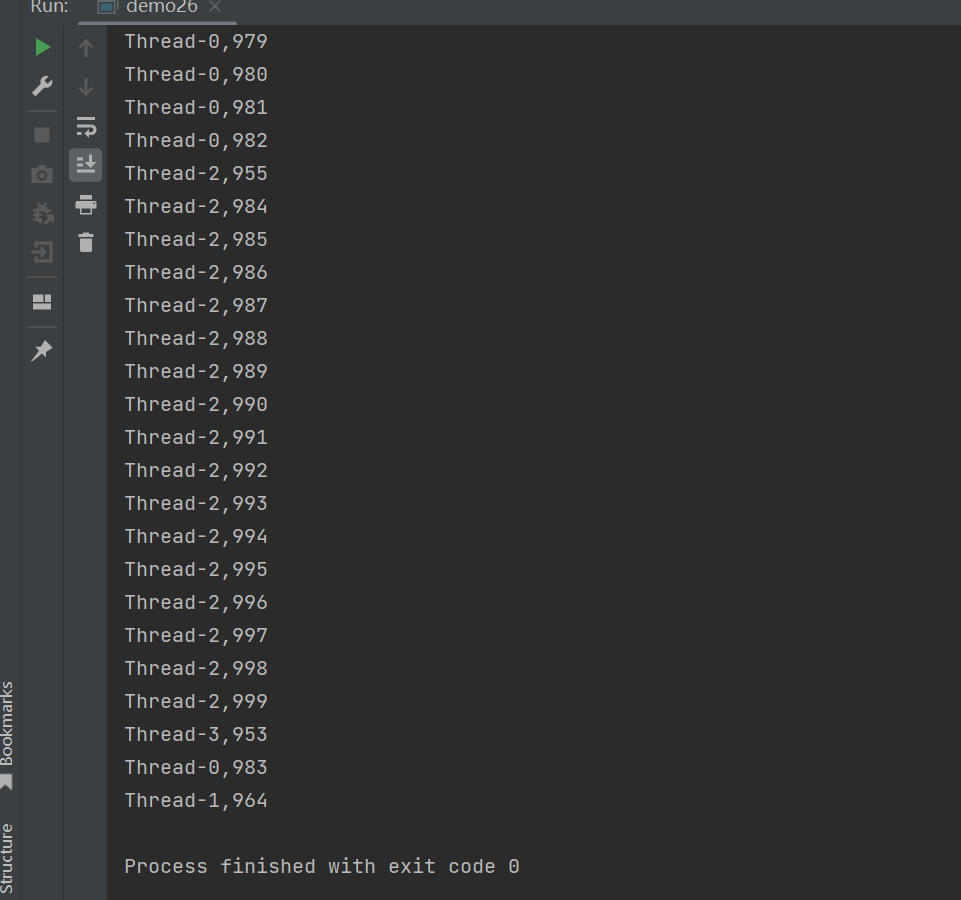
定时器
类似一个"闹钟",设定好时间之后,就执行指定代码
Timer类中有一个核心方法schedule有两个参数
第一个表示执行任务,第二个表示多长时间以后执行

public class demo27 {public static void main(String[] args) throws InterruptedException {Timer timer = new Timer();timer.schedule(new TimerTask() {@Overridepublic void run() {System.out.println("1000");}},1000);timer.schedule(new TimerTask() {@Overridepublic void run() {System.out.println("3000");}},3000);timer.schedule(new TimerTask() {@Overridepublic void run() {System.out.println("2000");}},2000);Thread.sleep(4000);timer.cancel();}
}这个Timer类内置是前台线程,因此这里需要使用cancel手动结束程序
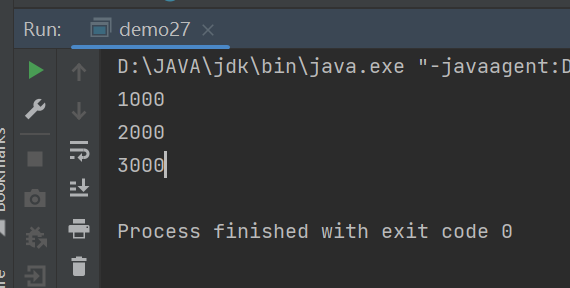
实现一个简单的定时器
1.有一个MyTask类用于存放执行的任务,有任务和时间,有比较方法和执行任务的方法
2.MyTimer类中使用优先级队列来确保执行顺序,使用BlockingQueue可能会出现死锁问题,因为其内部实现了锁
3.MyTimer构造函数中,使用锁保证线程安全,并且这里执行是死循环,因为不知道何时会有任务到时间了,通过时间判断是否要执行
4.如果获取的任务为空,说明队列为空,使用wait等待其schedule中添加方法使唤醒继续执行,并且这里要注意如果不为空,但是没到时间就可以使用wait给他设置一个指定时间,当添加任务时候这个可能需要唤醒
//任务类,有任务和时间
class MyTask implements Comparable<MyTask>{private Runnable runnable;private long time;//表示结束的时间MyTask(Runnable runnable,long delay){this.runnable = runnable;this.time = System.currentTimeMillis() + delay;}//执行任务public void run(){runnable.run();}//获取时间public long getTime() {return time;}//比较时间@Overridepublic int compareTo(MyTask o) {return (int)(this.getTime() - o.getTime());}
}
class MyTimer{//使用一个优先级队列将任务放一起private PriorityQueue<MyTask> queue = new PriorityQueue<>();private Object locker = new Object();public MyTimer(){Thread t = new Thread(() ->{synchronized (locker){try {while (true){//先获取任务MyTask task = queue.peek();while (task == null) {//如果为空就要等待任务插入locker.wait();task = queue.peek();}//判断是否到时间long curTime = System.currentTimeMillis();if(curTime >= task.getTime()){//执行任务,并将这个任务取出task.run();queue.poll();}else{locker.wait(task.getTime() - curTime);}}}catch (InterruptedException e) {throw new RuntimeException(e);}}});t.start();}public void schedule(Runnable runnable,long delay){synchronized (locker){MyTask task = new MyTask(runnable,delay);queue.add(task);locker.notify();}}
}
public class demo28 {public static void main(String[] args) {MyTimer timer = new MyTimer();//任务和时间timer.schedule(() ->{System.out.println(3000);},3000);timer.schedule(() ->{System.out.println(2000);},2000);timer.schedule(() ->{System.out.println(1000);},1000);}
}